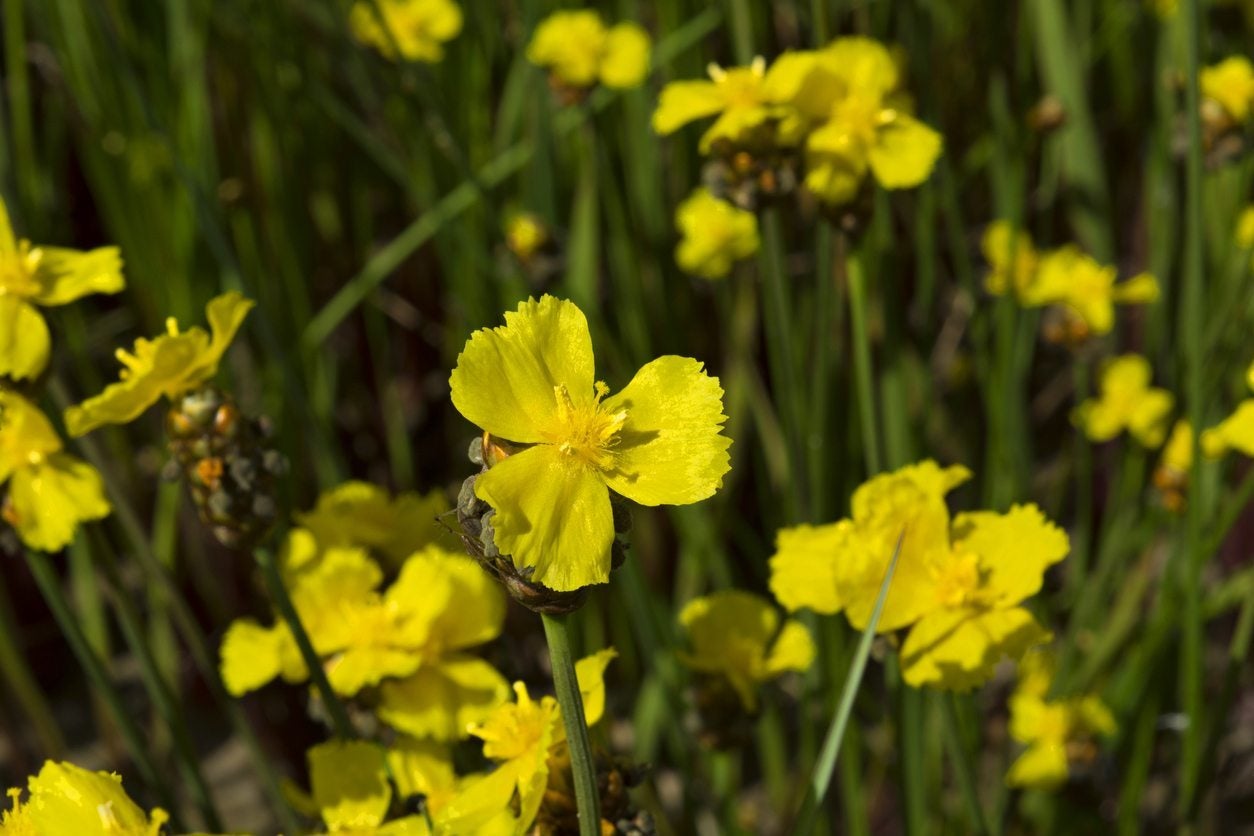Growing Yellow-Eyed Grasses In The Garden


Yellow-eyed grass plants (Xyris spp.) are herbaceous, wetland plants with grassy leaves and narrow stalks, each bearing one or two, three-petaled yellow or white flowers at the very tip. The yellow-eyed grass family is large, containing over 250 species found across the world. Although hardiness varies, most yellow-eyed grass varieties are suitable for growing in USDA plant hardiness zones 8 and above. Read on to learn how to grow yellow-eyed grass in your garden.
Growing Yellow-Eyed Grasses
Plant yellow-eyed grass seed in a cold frame outdoors, or directly in the garden in fall. Yellow-eyed grass thrives in moist, well-drained soil. Alternatively, stratify the seed in the refrigerator for two weeks. To stratify the seeds, place them in a handful of damp peat moss within a plastic bag. After two weeks, plant the seeds indoors. Keep the potting moist and watch for the seeds to germinate in nine to 14 days. Transplant the seedlings into a sunny garden spot after all danger of frost has passed in spring. If your climate is hot, yellow-eyed grass benefits from a little afternoon shade. You can also propagate yellow-eyed grass plants by dividing mature plants. If conditions are favorable, yellow-eyed grass will self-seed.
Caring for Yellow-Eyed Grass Plants
Feed yellow-eyed grass yearly in early spring, using a light application of low-nitrogen fertilizer. Water this wetland plant regularly. Divide yellow-eyed grass every two to three years. Early spring is the best time for this task. Cut back foliage before new growth appears in early spring.
Yellow-Eyed Grass Varieties
Northern yellow-eyed grass (Xyris montana): Also known as bog yellow-eyed grass or montane yellow-eyed grass, this plant is found in bogs, fens, and peatlands of the northeastern and north-central United States and Northern and Eastern Canada. It is threatened due to habitat destruction, changes in land use and recreational activities. Twisted yellow-eyed grass (Xyris torta): Larger than most varieties, northern yellow-eyed grass displays distinct, twisted stems and leaves. It grows along shores and in wet, peaty, or sandy meadows. Twisted yellow-eyed grass, found in the central and eastern United States, is threatened due to habitat destruction and encroachment of invasive plants. It is also known as slender yellow-eyed grass. Small’s yellow-eyed grass (Xyris smalliana): In the United States, this plant is found primarily along boggy coastal plains from Maine to Texas. Don’t be deceived by the name; this plant reaches heights of about 24 inches (61 cm.). Small’s yellow-eyed grass was named for a botanist named Small. Drummond’s yellow-eyed grass (Xyris drummondii Malme): Drummond’s yellow-eyed grass grows in coastal areas from east Texas to the Florida Panhandle. While most yellow-eyed grass varieties bloom in spring and summer, this type flowers a little later – in summer and fall. Tennessee yellow-eyed grass (Xyris tennesseensis): This rare plant is found in small sections of Georgia, Tennessee and Alabama. Tennessee yellow-eyed grass is endangered due to habitat loss and degradation, including clearcutting.
Sign up for the Gardening Know How newsletter today and receive a free copy of our e-book "How to Grow Delicious Tomatoes".

A Credentialed Garden Writer, Mary H. Dyer was with Gardening Know How in the very beginning, publishing articles as early as 2007.